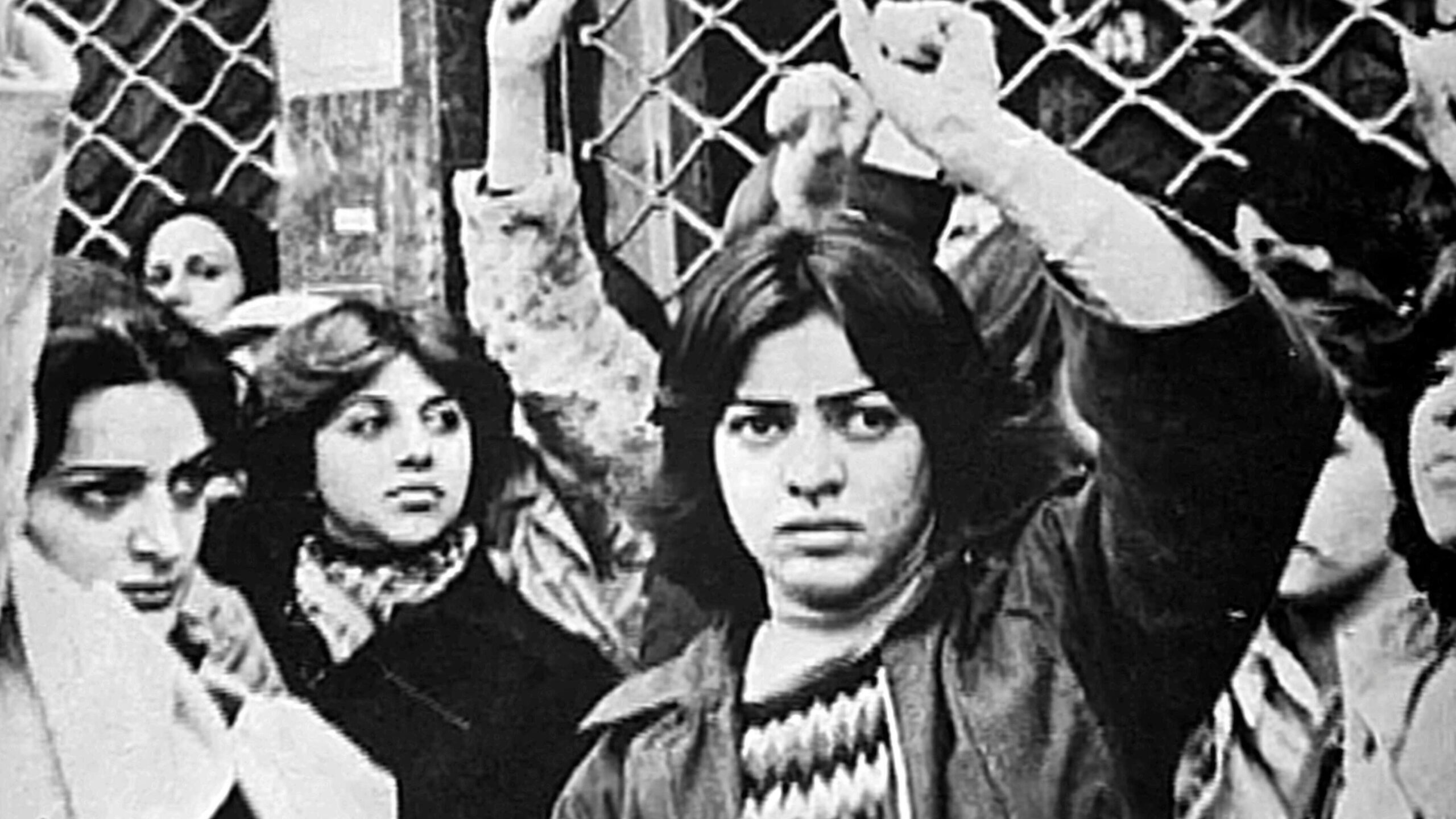Ervand Abrahamian's 'Iran Between Two Revolutions': A Timeless Analysis
Table of Contents
- The Unfolding Century: Iran's Economic and Political Tapestry
- Who is Ervand Abrahamian?
- The Unfolding Century: Iran's Economic and Political Tapestry
- Modernity and Democracy: An Incomplete Journey
- The Interaction of Forces: A Core Insight
- Why Iran Remained a Mystery
- The Enduring Legacy of "Iran Between Two Revolutions"
- Beyond the Revolutions: Abrahamian's Broader Contributions
- Conclusion
The Unfolding Century: Iran's Economic and Political Tapestry
At its core, *Iran Between Two Revolutions* delves deep into the economic relations and political development of Iran over a crucial hundred-year span. This period, stretching from the late 19th century up to the eve of the 1979 revolution, was a crucible of change, marked by both internal struggles for reform and external pressures from colonial powers. Abrahamian’s genius lies in his ability to weave together these disparate threads into a coherent and compelling narrative. He doesn't just list events; he analyzes the underlying structures and forces that shaped them. The book's analytical framework is particularly strong in its examination of how economic shifts – from the decline of traditional agriculture to the rise of oil revenues – fundamentally altered the social fabric of Iran. These economic transformations were not isolated phenomena; they directly influenced the distribution of power, the emergence of new social classes, and the shifting loyalties of existing ones. Understanding these dynamics is crucial for grasping why certain political movements gained traction while others faded into obscurity.Who is Ervand Abrahamian?
To fully appreciate the depth and authority of *Iran Between Two Revolutions*, it is essential to understand the scholar behind it. Ervand Abrahamian is not just an academic; he is a bridge between cultures and an embodiment of rigorous historical inquiry. Born in Iran and raised in England, his unique background provides him with a nuanced perspective that few others possess. This dual heritage, coupled with his exceptional academic training, has equipped him with the tools to dissect the complexities of Iranian society with both precision and empathy. Abrahamian's academic journey is equally impressive. He earned his B.A. and M.A. from Oxford University, followed by further studies at Columbia University. This robust educational foundation, combined with his lived experience, makes him exceptionally qualified to teach world and Middle East history. His ability to navigate both Western academic traditions and the intricacies of Iranian culture allows him to offer insights that transcend superficial analyses. He is a scholar who understands that history is not just about dates and names, but about the lived experiences and struggles of people.Ervand Abrahamian: At a Glance
| Full Name | Ervand Abrahamian |
| Born | Iran |
| Raised | England |
| Education | B.A., M.A. (Oxford University), Columbia University |
| Notable Works | Iran Between Two Revolutions, The Iranian Mojahedin, Khomeinism, Tortured Confessions, Inventing the Axis of Evil |
| Specialization | Middle East History, Iranian Politics and Society |
The Unfolding Century: Iran's Economic and Political Tapestry
Abrahamian's meticulous research in *Iran Between Two Revolutions* extends to a granular examination of the various groups that constituted Iranian society. He doesn't merely acknowledge their existence but analyzes their evolving roles and relationships within the broader political landscape. This detailed approach is crucial for understanding the fragmentation and alliances that characterized Iranian politics for a century.Ethnic Groups, Social Classes, and Political Factions
One of the book's strengths is its detailed exploration of:- Ethnic Groups: Iran is a mosaic of diverse ethnic communities, each with its own history, culture, and often, political grievances. Abrahamian shows how these groups were either integrated into or marginalized from the central power structures, and how their identities played a role in political mobilization.
- Social Classes: From the traditional aristocracy and clergy to the emerging industrial working class and the burgeoning middle class, the book meticulously traces the rise and fall of various social strata. It highlights how economic changes reshaped these classes and, in turn, their political aspirations and alliances. For example, the growing power of the bazaar merchants and the intelligentsia often put them at odds with the ruling elite.
- Parties and Political Groups: The period between the two revolutions saw the proliferation of numerous political parties and organizations, ranging from secular nationalists and communists to religious fundamentalists. Abrahamian dissects their ideologies, their bases of support, and their strategies, illustrating how their interactions and conflicts shaped the trajectory of Iranian politics. He particularly emphasizes the often-fragile coalitions and deep ideological divides that prevented sustained democratic progress.
Modernity and Democracy: An Incomplete Journey
A central theme in *Iran Between Two Revolutions* is Abrahamian's assertion regarding the "emergence of incomplete and immature modernity and democracy in Iran." This isn't a casual observation but a deeply researched conclusion. He argues that while Iran certainly experienced elements of modernization – industrialization, urbanization, secular education, and the adoption of Western political ideas – these processes were often imposed from above, lacked deep societal roots, and were frequently undermined by authoritarian tendencies. The concept of "incomplete modernity" suggests that while the outward forms of modern institutions (like a parliament or a constitution) might have existed, the underlying social and political structures necessary for genuine democratic participation and accountability were either absent or severely underdeveloped. Similarly, "immature democracy" points to a situation where democratic aspirations were present, but the mechanisms for their sustained realization – such as robust civil society, independent judiciary, and truly representative political parties – failed to fully mature. This often led to cycles of reform followed by repression, leaving the populace disillusioned and creating fertile ground for radical change. This particular insight from *Ervand Abrahamian Iran Between Two Revolutions* is vital for understanding the historical context of the 1979 revolution.The Interaction of Forces: A Core Insight
One of the most profound contributions of *Iran Between Two Revolutions* is its emphasis on the dynamic interaction between political organizations and social forces. Abrahamian doesn't view history as a series of isolated events or the sole product of elite decisions. Instead, he meticulously demonstrates how the actions of political parties, religious institutions, and state apparatuses were constantly shaped by, and in turn shaped, the aspirations, grievances, and movements of various social classes and ethnic groups. For instance, he illustrates how the Pahlavi state's modernization policies, while aiming to strengthen the central government, inadvertently created new social forces (like an educated middle class or a dispossessed peasantry) that eventually challenged the very regime that brought them into being. Similarly, the religious establishment, often seen as traditional, adapted and mobilized social discontent, transforming itself into a powerful political force. This analytical framework, highlighting the symbiotic relationship between top-down policies and bottom-up societal reactions, provides a far more nuanced and realistic understanding of Iran's revolutionary trajectory than simpler, monocausal explanations. This holistic approach makes *Iran Between Two Revolutions* a landmark study.Why Iran Remained a Mystery
A major lesson of the Iranian Revolution was how poorly students of the Middle East understood the social and political forces there. This was particularly striking given that Iran had been the object of more official and academic study than perhaps any other state in the region except Israel. Despite extensive scholarly work, intelligence analyses, and diplomatic reports, the depth of popular discontent and the specific nature of the revolutionary movement caught many by surprise. Abrahamian’s work implicitly addresses this puzzle. He suggests that perhaps much of the prior study focused too heavily on state structures, elite politics, or external factors, often overlooking the intricate internal dynamics that *Iran Between Two Revolutions* so thoroughly explores. The failure to adequately grasp the nuances of social class formation, the evolving role of the clergy, the deep-seated grievances of the bazaar merchants, or the complex interplay of various political organizations meant that the revolutionary potential brewing beneath the surface was largely underestimated. His book, therefore, serves as a corrective, providing the granular detail and analytical depth necessary to bridge this understanding gap.The Enduring Legacy of "Iran Between Two Revolutions"
Over four decades since its publication, *Iran Between Two Revolutions* by Ervand Abrahamian continues to be an indispensable resource for scholars, students, and policymakers alike. Its influence on the field of Iranian studies is undeniable, solidifying its status as a foundational text. The book's meticulous research, combined with its sophisticated analytical framework, set a new standard for historical inquiry into the region.A Landmark Study's Impact
The data confirms that *Iran Between Two Revolutions* is Abrahamian's "best known and most cited book." This widespread recognition is not accidental. Its impact stems from several key factors:- Comprehensive Scope: It covers a vast and complex period with remarkable detail, offering a panoramic view of Iranian history.
- Rigorous Methodology: Abrahamian's use of diverse sources and his analytical rigor provide a robust foundation for his arguments.
- Challenging Conventional Wisdom: The book dared to question simplistic explanations for the Iranian Revolution, offering a multi-layered understanding that considered internal social and political forces.
- Foundation for Future Research: It has inspired countless subsequent studies, providing a conceptual and empirical bedrock for new generations of scholars.
- Clarity and Accessibility: Despite its academic depth, the book is written in a clear and engaging style, making complex ideas accessible to a broad readership.
Beyond the Revolutions: Abrahamian's Broader Contributions
While *Iran Between Two Revolutions* is undoubtedly his most celebrated work, Ervand Abrahamian's scholarly contributions extend far beyond this single volume. His bibliography reflects a sustained commitment to understanding various facets of Iranian history and politics, consistently applying the same rigorous analytical lens that made his magnum opus so impactful.Other Scholarly Works
Among his other significant publications are:- ***The Iranian Mojahedin:*** This book delves into the history and ideology of one of Iran's most significant and controversial opposition groups, providing crucial context for their role in the revolution and its aftermath.
- ***Khomeinism: Essays on the Islamic Republic:*** Here, Abrahamian analyzes the political thought and legacy of Ayatollah Ruhollah Khomeini, the founder of the Islamic Republic, offering insights into the ideological underpinnings of the post-revolutionary state.
- ***Tortured Confessions: Prisons and Public Recantations in Modern Iran:*** This chilling and vital work examines the history of political imprisonment, torture, and forced public confessions in Iran, shedding light on the darker aspects of state power and dissent.
- ***Inventing the Axis of Evil: The Truth About North Korea, Iran, and Syria:*** In this more contemporary analysis, Abrahamian critically examines the rhetoric and policies surrounding the "Axis of Evil" concept, providing a historical and geopolitical context for understanding these nations.
Conclusion
Ervand Abrahamian's *Iran Between Two Revolutions* stands as a monumental achievement in historical scholarship, offering an unparalleled exploration of Iran's journey through a century of profound change. By meticulously examining economic relations, political developments, ethnic groups, social classes, and political organizations, Abrahamian illuminates the complex forces that shaped Iran's "incomplete and immature modernity and democracy." His emphasis on the interaction between political organizations and social forces provides a vital framework for understanding why a nation so extensively studied could still experience such a surprising revolutionary upheaval. This landmark study, published by Princeton University Press, remains Abrahamian's most cited and influential work, a testament to its enduring relevance and analytical depth. For anyone seeking to move beyond superficial headlines and truly grasp the historical roots of contemporary Iran, *Iran Between Two Revolutions* is not just a recommended read; it is an essential one. Its insights continue to resonate, offering crucial lessons on the complexities of revolution, modernization, and the delicate balance of power within societies. What are your thoughts on Abrahamian's analysis of Iran's path to revolution? Share your perspectives in the comments below, and don't forget to explore our other articles on Middle Eastern history and politics for more in-depth insights.- How Did Bloodhound Lil Jeff Die
- Selcuk Sport
- Maria Temara Leaked Videos
- Averyleigh Onlyfans Sex
- Faith Jenkins Net Worth 2024

Iran Between Two Revolutions - History Book by Ervand Abrahamian

Between Revolutions - DokIncubator

Slope Survey: Ervand Abrahamian